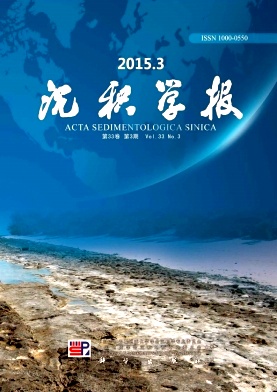An Evidence of Millennial-Scale Summer Monsoon Boundary Change in the Northwest China—Analysis Results From Saline Minerals in Lake Sediments of Yanchi Lake and Zhuye Lake
doi: 10.14027/j.cnki.cjxb.2015.03.010
- Received Date: 2014-03-14
- Rev Recd Date: 2014-06-10
- Publish Date: 2015-06-10
-
Key words:
- saline minerals /
- millennial-scale /
- summer monsoon boundary /
- Holocene
Abstract: The northwest margin of summer monsoon in China is one of the most sensitive areas to response long-time scale climate change, but the related researches between summer monsoon boundary changes and millennial-scale climate change driving mechanism are still lack of sufficient evidence. The temporal and spatial variation of types and content of saline minerals in lake sediments could speculate the characteristics of climate change in the northwest margin of summer monsoon. Yanchi Lake is located in the northern Qilian Mountains and the central Hexi Corridor, while Zhuye Lake is located in the eastern Hexi Corridor, which is a key research area for the long-term northern boundary changes of the Asian summer monsoon. It has important significance for clarifing monsoon change mechanism under millennial-scale and predict long-time scale climate change to study how the motion of the northwest border of summer monsoon impact climate change process in the northwest margin of summer monsoon. In this paper, we chose YC section in Yanchi Lake and QTH01 and QTH02 sections in Zhuye Lake, which located at different positions of Hexi Corridor, to conduct a millennial-scale comparative study of temporal and spatial variation of types and content of saline minerals. The results revealed that saline minerals in QTH01 and QTH02 sections are mainly carbonate minerals like calcite and aragonite, and there are only sporadic sulfate minerals, while sulfate minerals content in YC section is relatively high, and there also exist chloride type minerals which indicated the more arid environment in Yanchi Lake than in Zhuye Lake. During the late glacial and early Holocene, all of the three sections were influenced by monsoon conveying water vapor, carbonate minerals well sedimentated, and monsoon boundary expanded to the middle region of Qilian mountains in this period. The summer monsoon effect weakened in middle Holocene, Zhuye Lake retreated with carbonate mineral contents reached peak values, and Yanchi Lake showed extreme drought climate characteristics and the content of sulfate minerals decreased because of the “salt effect”. The northwestern border of summer monsoon should be between the Shiyang river drainage basin and the Yanchi drainage basin in middle Holocene. Yanchi Lake and Zhuye Lake were given priority to eolian deposition in late Holocene, carbonate minerals were difficult to conserve in such arid climate, sulfate and chloride mineral contents had high value, and the northwestern border of summer monsoon further retreated to south. In conclusion, the variations of salt mineral contents are well respond to Holocene climate change characteristics, and the northwestern border of summer monsoon swung between the Shiyang river drainage basin and the Yanchi drainage basin under millennial-scale during Holocene.
| Citation: | LI Yu, ZHANG ChengQi, ZHOU XueHua, WANG Yue. An Evidence of Millennial-Scale Summer Monsoon Boundary Change in the Northwest China—Analysis Results From Saline Minerals in Lake Sediments of Yanchi Lake and Zhuye Lake[J]. Acta Sedimentologica Sinica, 2015, 33(3): 524-536. doi: 10.14027/j.cnki.cjxb.2015.03.010 |






 DownLoad:
DownLoad: